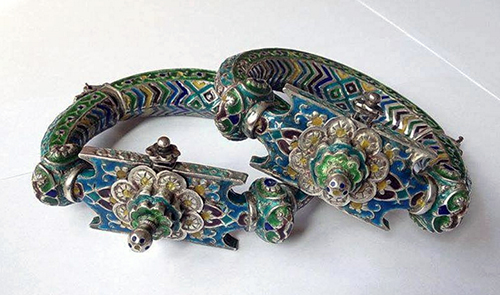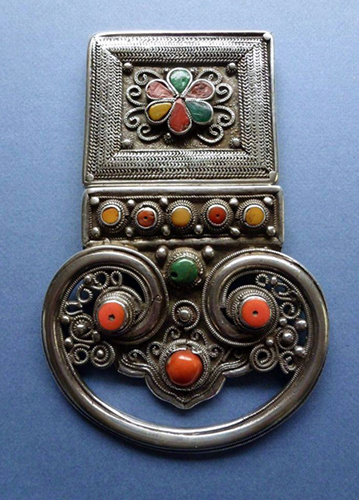

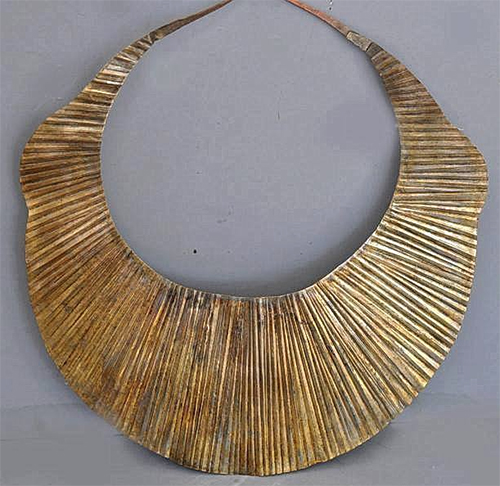
Neck Ring (Nifato-Fato) from Indonesia
This neck ring from the Ono Niha people on the island of Nias, Indonesia, is very light and thin, making it eminently wearable even though it is 29 cm in width. Because it made such a powerful impression, it was only worn by noblemen. The most expensive nifato-fatos were made entirely of gold. If an… Continue Reading
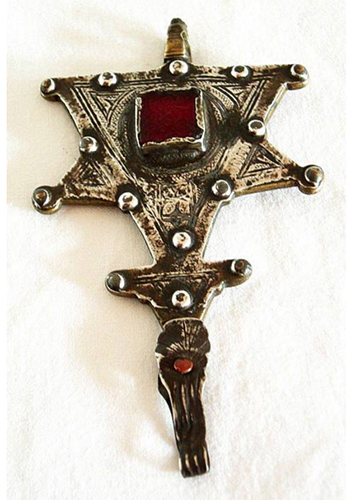
Fibula, Morocco
In this piece, silver, niello and a deep-red glass stone make a robust visual impact. The fibula would have been one of a pair. A layer of brass supports the silver layer above. Sarah Corbett commented in 2011: “An anti-Atlas piece in the fabrication style of ida ou semial pieces, but I would chance that… Continue Reading
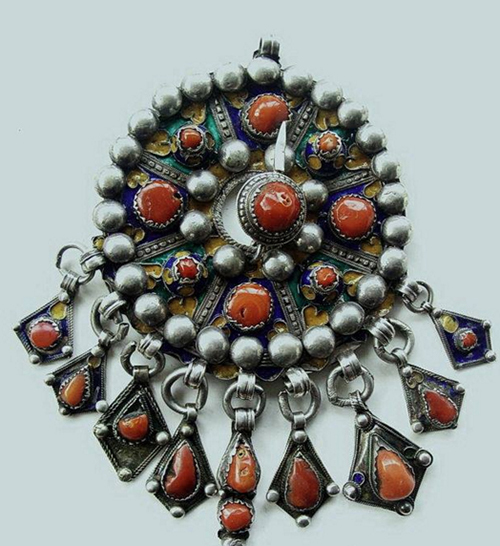
Fibula (Tabzimt) from Algeria
The tabzimt is well known as a traditional fibula from the Kabyle Berbers, who live in the coastal mountain regions of northern Algeria. Picture 2 shows the back of this piece. Continue Reading
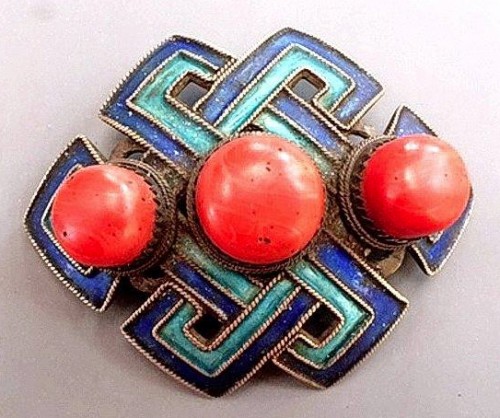
Hair Ornament from Mongolia
Mongolian hair ornament, enameled silver with paste coral; probably Charhar group; late 19th c. or – perhaps more likely – early 20th c; width 9.5 cm. Acquired in 2015, with great gratitude, from Linda Pastorino, who had held it in her private collection. It’s even more sensational in reality than we had imagined, having admired… Continue Reading
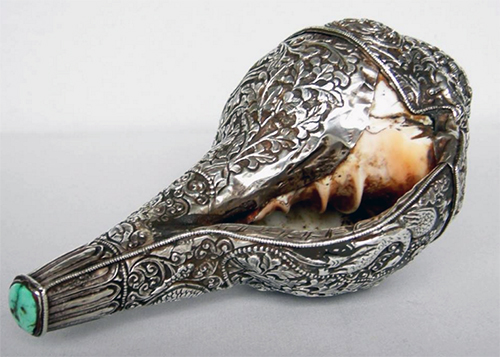
Trumpet from Tibet
Picture 1 shows a conch shell encased in silver and a turquoise end piece, while the hole on the other side (picture 2) enables the user to produce a deep, far-reaching sound by using the embouchure of a trumpet player. The horn was sounded to summon monks to prayer. Continue Reading
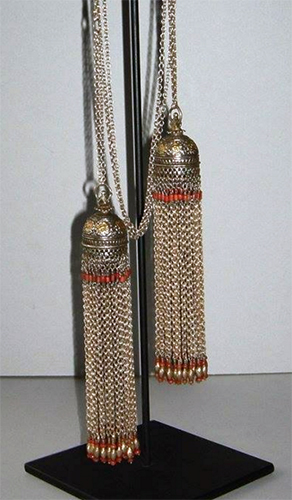
Belt Tassels from Uzbekistan
These long silver and coral tassels were traditionally most often used in Uzbekistan as belt ends. They could be attached to quite elaborate and complicated belts or form a belt with a very simple structure, as in this case, where the belt is in effect a chain. Continue Reading
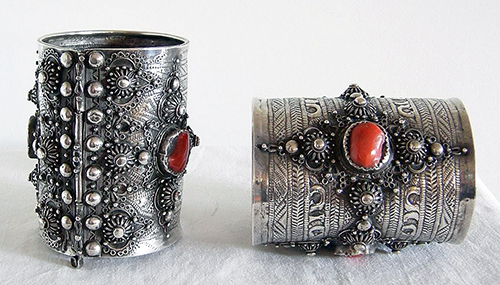
Anklets from Algeria
These anklets are exceptional in not showing enamelling, which is typical of later pieces. Continue Reading

